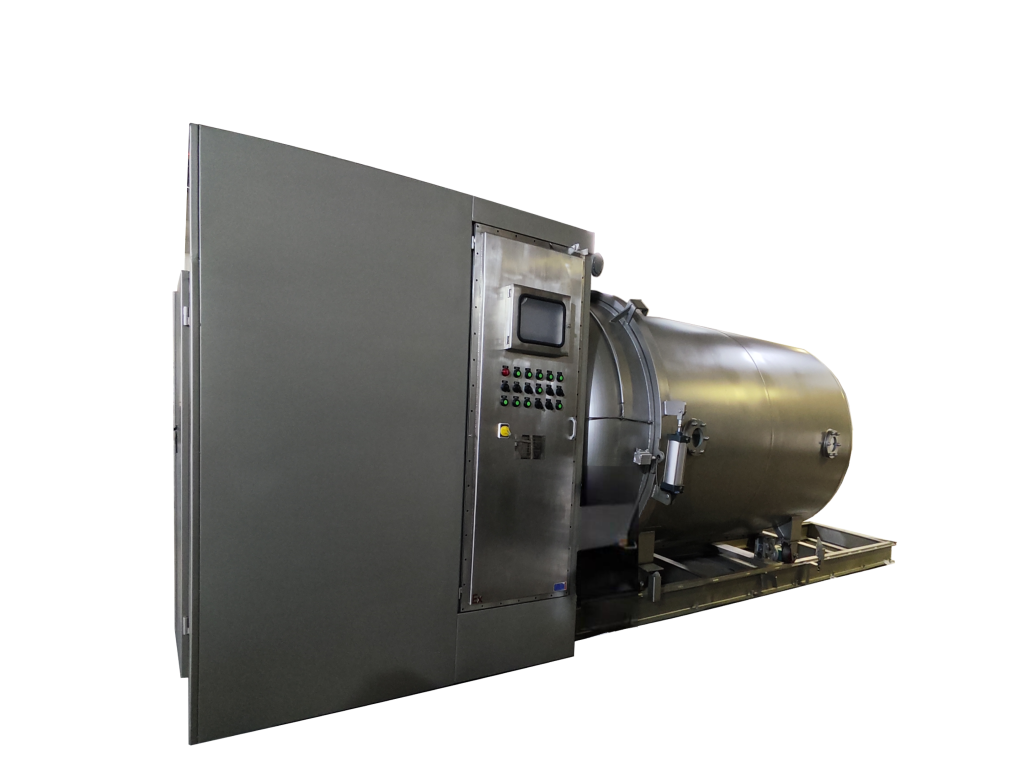
Selection of materials for jigger dyeing machine parts
In the textile industry, the jigger dyeing machine is a key textile printing and dyeing equipment. The selection of its main manufacturing material has a vital impact on the performance, durability, and dyeing effect of the equipment. Stainless steel is one of the most commonly used materials in modern dye jigger manufacturing, especially 304 and 316L.
Contents
Material comparison between 304 and 316L stainless steel

| 304 Stainless Steel | 316L Stainless Steel | |
| Corrosion resistance | Good corrosion resistance and oxidation resistance, suitable for general atmospheric environments and most daily use scenarios. Note: In environments containing chloride ions (such as coastal areas), its corrosion resistance will be affected, and pitting corrosion is prone to occur. | Due to the addition of molybdenum, its corrosion resistance is significantly better than 304 stainless steel, especially in chloride environments. |
| High temperature resistance | It has good high temperature resistance and can work at temperatures up to 800 °C, but its strength will be reduced at high temperatures. | Excellent high temperature resistance, but due to its lower carbon content, its ability to maintain strength at high temperatures is slightly inferior to that of 304 stainless steel. |
| Cost | The price of 304 stainless steel in the market is usually more economical than 316L stainless steel. | Due to its higher corrosion resistance and more complicated manufacturing process, the cost of 316L stainless steel is higher. |
| Application Areas | Widely used in architectural decoration, food processing equipment, home decoration, industrial applications, and other fields. | Suitable for occasions with high requirements for corrosion resistance, such as marine engineering, chemical equipment, medical equipment, and new energy fields. |
- In the manufacturing process of the jigger dyeing machine, the actual use of each component should be fully considered to select more suitable materials for manufacturing.
Material selection for each component of the jigger dyeing machine

The jigger dyeing machine is composed of a frame, an electric control cabinet, a vessel/top cover, a circulation system, a dye bath, a main roller, a guide roller, a tension frame, an additional tank, a debatching device, and other parts.
No contact with dye solution
For parts that are not in contact with the dye solution, the main consideration when choosing the manufacturing material is the use environment of the equipment.
- Generally speaking, the environment of the dyeing factory is harsh. We recommend using 304 stainless steel to ensure the durability of these parts, and they are not easily corroded in high temperature and high humidity environments.
Note: Some jigger dyeing machines also use carbon steel to make these parts, but the service life will be very short, even less than 1/3 of that of 304 stainless steel. Generally, we do not recommend using it, but if you must consider the cost issue, you also need to strictly control the use of it.
Contact with dye solution
For parts that are in direct contact with the dye solution, the selection of materials needs to take into account the issue of fabric dyes.
- Fabric dyeing dyes can generally be divided into four categories: reactive dyes, disperse dyes, vat dyes, and acid dyes, and their corrosiveness to stainless steel is also different.
| Dyes | Feature | Material selection |
| Reactive dyes | Reactive dyes are usually water-soluble and can react directly with substrates such as cellulose or protein to dye through chemical reactions. Reactive dyes are relatively less corrosive to stainless steel because they react mainly with fibers rather than with the metal surface. However, if exposed for a long time, especially at high concentrations, some corrosion may occur to the stainless steel surface. | High cost performance: 304 High-end quality: 316L |
| Disperse dyes | Disperse dyes are usually oil-soluble or insoluble in water and need to be dispersed in aqueous media by additives such as dispersants. Disperse dyes are also less corrosive to stainless steel because they are mainly used for dyeing synthetic fibers and have less chance of contact with metal materials. However, if the dispersant contains ingredients that are corrosive to stainless steel, it may indirectly cause corrosion of stainless steel. | High cost performance: 304 High-end quality: 316L |
| Vat dyes | Most vat dyes are polycyclic aromatic compounds, and their molecular structure does not contain water-soluble groups such as sulfonic acid and carboxylic acid groups. The corrosiveness of vat dyes to stainless steel depends on their use conditions and concentration. Under alkaline conditions, vat dyes may cause some corrosion to the stainless steel surface, but this corrosion is usually controllable. | High cost performance: 304 High-end quality: 316L |
| Acid dyes | Acid dyes are a type of water-soluble anionic dyes, and the dye molecules contain acidic groups such as sulfonic acid and carboxyl groups. Acid dyes are used under acidic conditions, which may cause certain corrosion to the stainless steel surface. Especially when the pH value of the acid dye is low, the corrosion effect is more obvious. | The only choice: 316L |
In general, the selection of materials for jigger dyeing machine manufacturing is a complex and delicate process that requires comprehensive consideration of multiple factors. By scientifically and rationally selecting materials, not only can the performance and life of the equipment be significantly improved, but production costs can also be effectively controlled, bringing greater economic benefits to the enterprise.


